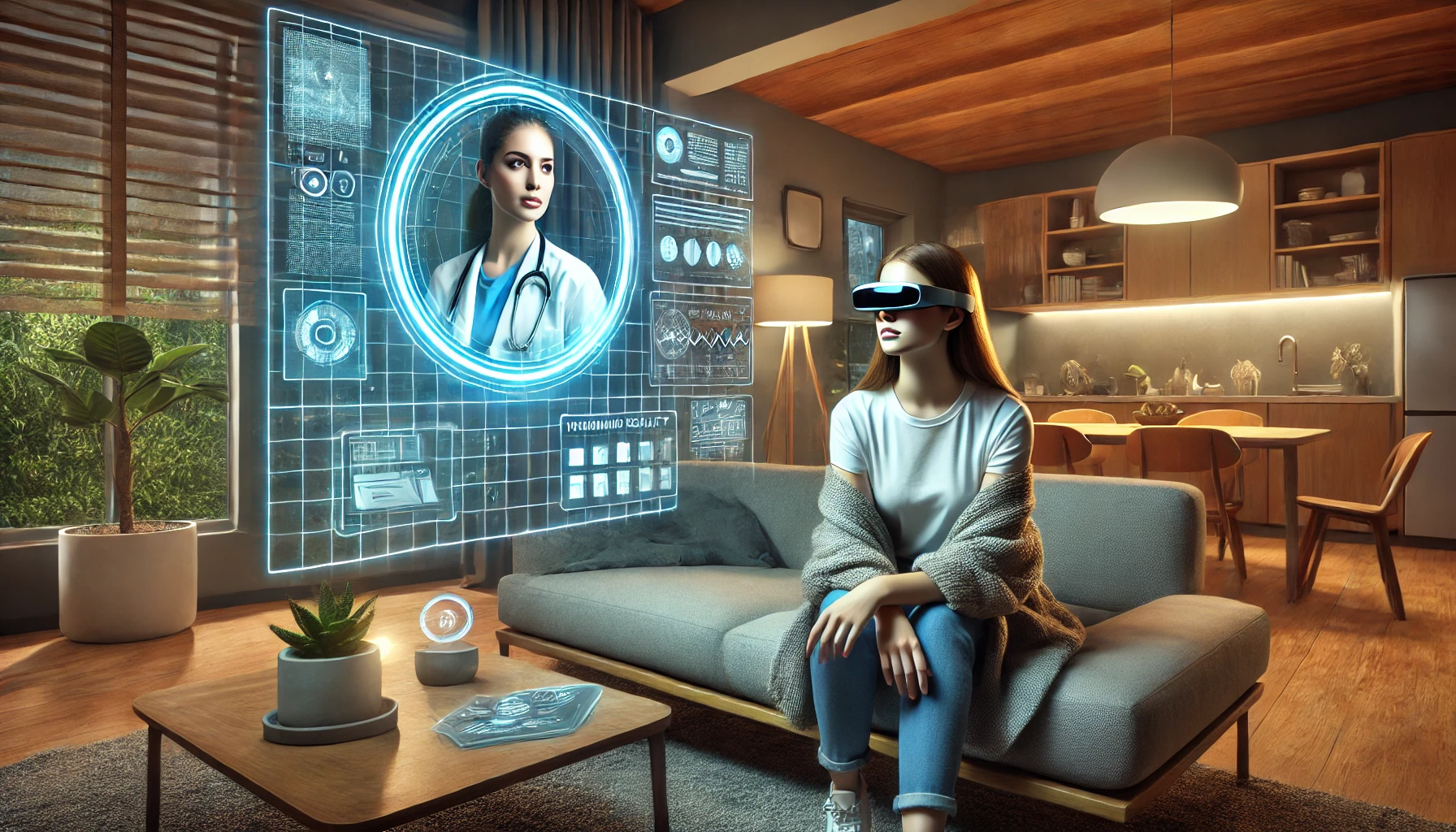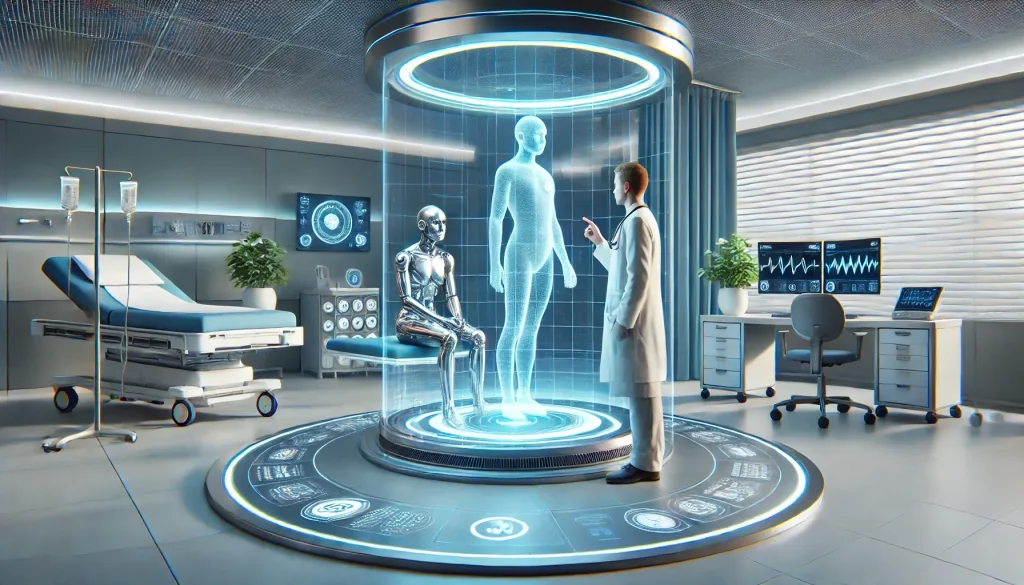
AI-Powered Virtual Doctors: Revolutionising Healthcare
AI-powered virtual doctors are revolutionising the healthcare industry by offering seamless access to medical expertise from the comfort of one’s home. These systems use state-of-the-art artificial intelligence technologies to bridge the gap between patients and healthcare providers. By leveraging big data, machine learning, and real-time diagnostics, virtual doctors are not only improving the efficiency of healthcare but also making it more accessible for patients around the world. Below, we will delve deeper into the concept, benefits, and challenges of these advanced medical tools.
What Are AI-Powered Virtual Doctors?
AI-powered virtual doctors refer to sophisticated systems designed to mimic the tasks traditionally performed by human medical professionals. These systems utilise advanced algorithms and natural language processing to interpret symptoms, analyse data, and provide personalised medical advice. While they do not entirely replace human doctors, they serve as a complementary tool to assist in diagnostics and healthcare management. The growing reliance on these systems can be attributed to their ability to process vast amounts of medical data at remarkable speeds.
These virtual doctors function through a combination of hardware and software. They often involve wearable devices, mobile apps, and cloud computing to gather and analyse patient data. By using inputs such as voice commands, wearable health metrics, and previous medical records, they can provide highly tailored medical insights. Such innovations not only improve accuracy but also significantly reduce the time taken for diagnostics and treatment recommendations.
Core Technologies Behind Virtual Doctors
The backbone of virtual doctors is formed by cutting-edge technologies. Natural Language Processing (NLP) enables machines to understand human speech, making it possible for patients to describe their symptoms conversationally. Machine Learning (ML) algorithms improve diagnostic accuracy by continuously learning from new data. Furthermore, image recognition technologies, such as computer vision, assist in analysing medical imaging like X-rays and MRIs, which is particularly useful for detecting diseases like cancer at an early stage.
Wearable technology further enhances the functionality of AI doctors by providing real-time updates on vital health metrics. Devices such as smartwatches and fitness trackers can monitor heart rate, blood pressure, and oxygen levels, and relay this information to virtual doctors for immediate analysis. The integration of these tools represents the future of proactive and preventative healthcare, allowing individuals to monitor their health continuously and address potential concerns before they escalate.
Benefits of AI-Powered Virtual Doctors
The benefits of integrating virtual doctors into the healthcare ecosystem are numerous. One of the most significant advantages is accessibility. Patients in remote or rural areas, where healthcare facilities may be scarce, can now access expert medical advice with just an internet connection. This technology has bridged the gap in healthcare disparities by extending services to underserved populations. Another notable benefit is the round-the-clock availability of virtual doctors, allowing patients to seek help any time of the day or night without waiting for an appointment.
Additionally, these systems are equipped to handle routine medical tasks such as prescribing medication, monitoring chronic diseases, and recommending lifestyle adjustments. This reduces the workload on human medical professionals, enabling them to focus on more complex cases. AI-powered diagnostics are also known for their high accuracy, as they rely on evidence-based algorithms to make decisions. This can significantly reduce errors that occasionally occur in human judgment.
Enhancing Patient Experience and Outcomes
Virtual doctors are designed to be user-friendly and intuitive. The interfaces of these systems are often simple enough for individuals of all ages and technical abilities to navigate. By delivering personalised treatment plans and follow-up reminders, they encourage patients to adhere to medical advice more consistently. Studies show that patients who receive clear and accessible medical guidance are more likely to follow through with their treatment, leading to improved health outcomes over time.
Moreover, virtual doctors allow patients to take greater control of their healthcare journey. Features such as daily health tips, customised exercise routines, and dietary recommendations help users actively manage their well-being. This empowerment not only fosters better patient engagement but also promotes healthier lifestyles. By combining convenience and precision, virtual doctors have become a valuable addition to modern healthcare.

Challenges and Ethical Considerations
Despite their numerous advantages, AI-powered virtual doctors face significant challenges and ethical dilemmas. One of the primary concerns is data privacy. These systems require access to sensitive personal and medical information to function effectively. Without stringent safeguards, there is a risk of data breaches that could compromise patient confidentiality. Ensuring compliance with data protection regulations such as GDPR and HIPAA is essential to maintaining public trust in these technologies.
Another challenge lies in the reliance on algorithms to make medical decisions. While AI systems are designed to support healthcare professionals, overdependence on these technologies could lead to critical oversights in complex cases that require human intuition and empathy. Additionally, there are ethical questions surrounding the role of AI in life-or-death situations, where human oversight is minimal or absent.
The Future of AI in Healthcare
The future of AI in healthcare is both promising and complex. Innovations such as predictive analytics, robotic-assisted surgeries, and AI-driven mental health therapies are already being explored. These advancements hold the potential to revolutionise medicine further, making it more precise and personalised. However, achieving this will require a collaborative effort between technologists, healthcare providers, and policymakers to ensure that these tools are deployed responsibly and equitably.
In conclusion, AI-powered virtual doctors are at the forefront of a healthcare revolution. By combining cutting-edge technologies with practical applications, they are making healthcare more accessible, efficient, and reliable. While challenges remain, their continued development promises a future where medical care is not only more innovative but also more inclusive for everyone.
